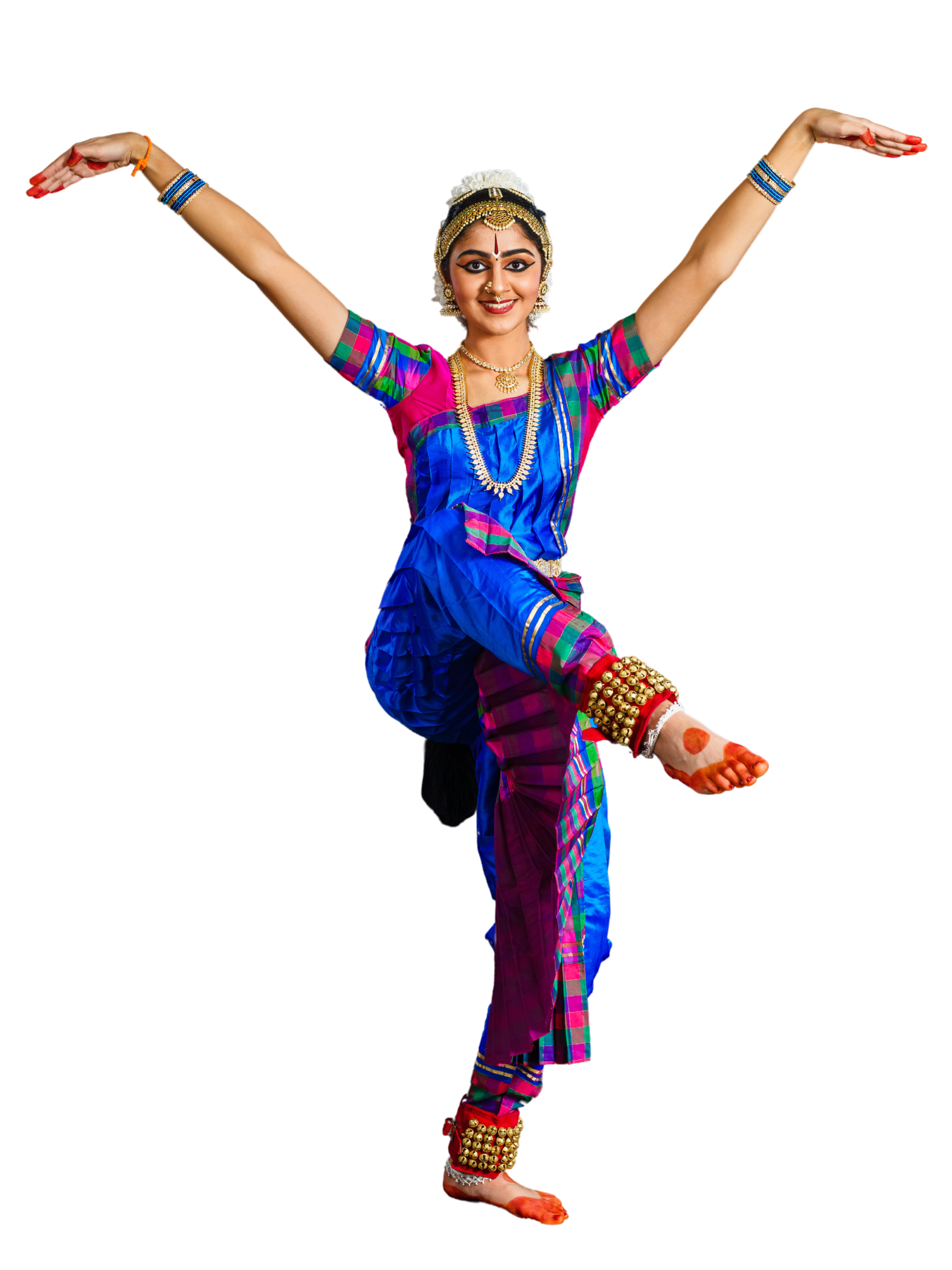Bharatanatyam
There is no wisdom nor knowledge,
no art nor craft, no device nor action
That is not to be found in Natya
Thus, wrote Bharata Muni, in his Natyashastra, the first known treatise on the art , dating around the 2nd Century BC. Flourishing in the temples of ancient India as a form of divine worship for over 2000 years, Bharatanatyam is a vibrant and rich classical dance style. Its current form evolved about 200 years ago with the mingling of Dravidian and Sanskrit cultures and has been nurtured in the heartland of Southern India. Today, it is a growing art, bringing to the stage a glimpse of ancient grandeur. The word Bharatanatyam takes ‘Bha’ from Bhava (emotion), ‘Ra’ from Raga (music), ‘Ta’ from Tala (Rhythm) and ‘Natyam’ (dance). Bharatanatyam is a blend of ‘Nritta’ (the rhythmic movements of the body), ‘Nrithya’ (the combination of rhythm with expressions through eyes, hands, and facial movements), and ‘Natya’ (drama). The essence of Bharathanatyam in its pure form is a combination of expressive dance of abhinaya, rhythm and music. It is a nuanced art form with strict rules where the dancer uses the variations of melody and meter to visually express the interpretation of words. Bharatanatyam blends the energy of rhythmic footwork known as Nritta, the expressive movements of emotions known as Abhinaya and statuesque poses that are iconic in Hinduism.

Bharatanatyam

There is no wisdom nor knowledge,
no art nor craft, no device nor action
That is not to be found in Natya
Thus, wrote Bharata Muni, in his Natyashastra, the first known treatise on the art , dating around the 2nd Century BC. Flourishing in the temples of ancient India as a form of divine worship for over 2000 years, Bharatanatyam is a vibrant and rich classical dance style. Its current form evolved about 200 years ago with the mingling of Dravidian and Sanskrit cultures and has been nurtured in the heartland of Southern India. Today, it is a growing art, bringing to the stage a glimpse of ancient grandeur. The word Bharatanatyam takes ‘Bha’ from Bhava (emotion), ‘Ra’ from Raga (music), ‘Ta’ from Tala (Rhythm) and ‘Natyam’ (dance). Bharatanatyam is a blend of ‘Nritta’ (the rhythmic movements of the body), ‘Nrithya’ (the combination of rhythm with expressions through eyes, hands, and facial movements), and ‘Natya’ (drama). The essence of Bharathanatyam in its pure form is a combination of expressive dance of abhinaya, rhythm and music. It is a nuanced art form with strict rules where the dancer uses the variations of melody and meter to visually express the interpretation of words. Bharatanatyam blends the energy of rhythmic footwork known as Nritta, the expressive movements of emotions known as Abhinaya and statuesque poses that are iconic in Hinduism.
